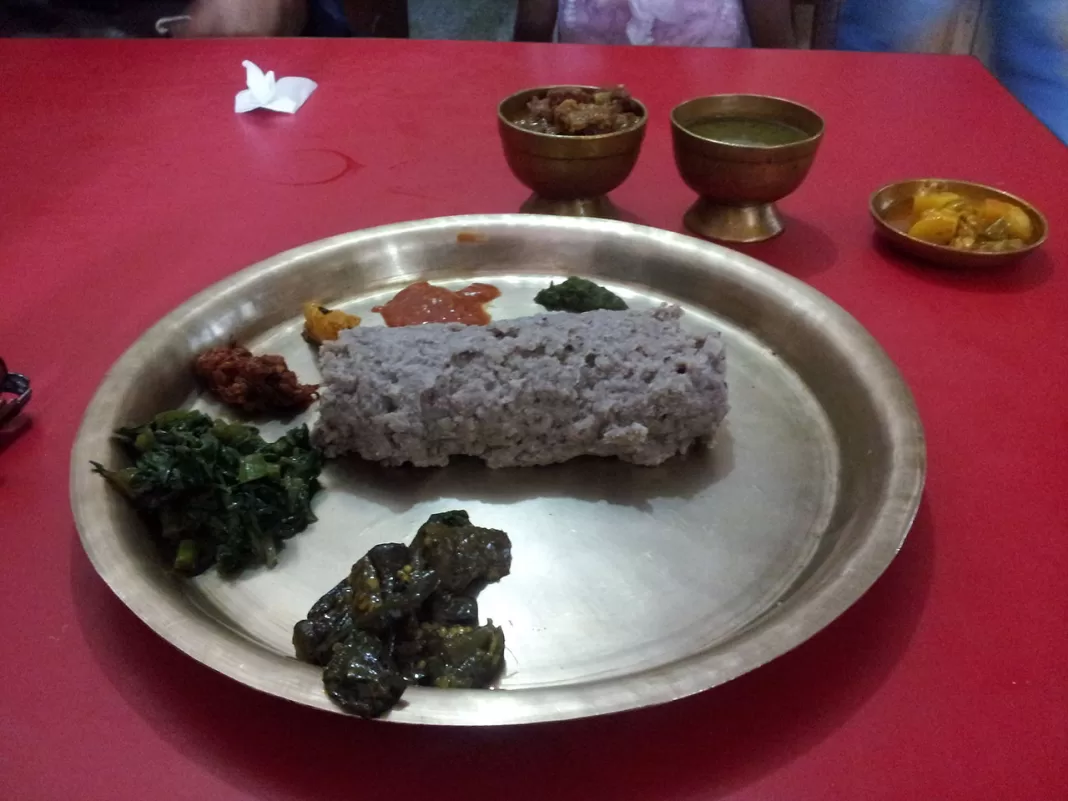Introduction
Dhindo (Nepali: ढिँडो ) is a traditional meal prepared in Nepal. It is a staple meal in various parts of Nepal, especially among the Tamangs in the Hilly Region of Nepal. It is also consumed in the Sikkim and Darjeeling regions of India.
Preparation and Serving
Dhindo is prepared by gradually adding flour to boiling water while stirring. The flour is added to the boiling water slowly, and stirred vigorously until the mixture is stiff. The process of making dhindo is called maskaaune (मस्काउने). Dhindo is traditionally prepared from ground buckwheat or millet, but corn meal is common as well. Theoretically, any flour can be used to make dhindo, as it is essentially a simple mixture of hot water and ground grain.
While cooking, dhindo may have ghee, garlic, salt or sugar added to it. Optionally, chopped mutton can be added to the dhindo, or small pieces or powder of soft chhurpi. The vessel of choice for preparing dhindo is a phalame tapke (iron pan). A narrow iron spatula called a dabilo (दाबिलो) is used to stir the dhindo as it thickens.
Dhindo is eaten by making a small ball with one’s fingers, dipping it in a liquid (lentil soup, meat soup, milk or gundruk) and swallowing without chewing. It is often served with chutney.
Cultural Significance
Though it is a staple food in Nepal, dhindo has previously been seen as an inferior food compared to rice, and was associated with low status. However, the inclusion of dhindo on urban restaurant menus has coincided with a rise in the food’s prestige, possibly attributable to the changing perception of Nepal’s indigenous crops, which are now recognized for their nutritional advantage.
Conclusion
Dhindo is a thick Nepalese porridge prepared by cooking ground millet or cornmeal flour. It is traditionally cooked in a taapke (cast-iron pan). The dish is mostly consumed in the mountainous regions where wheat and rice are difficult to grow. The porridge is often paired with pickles, yogurt, curried vegetables, or homemade butter. It is recommended to consume it as soon as possible since it hardens as it cools.
In conclusion, Dhindo is not just a meal, it’s a significant part of Nepalese culture and tradition. Its simplicity, versatility, and nutritional value make it a beloved staple in many Nepalese homes.
A global media for the latest news, entertainment, music fashion, and more.





